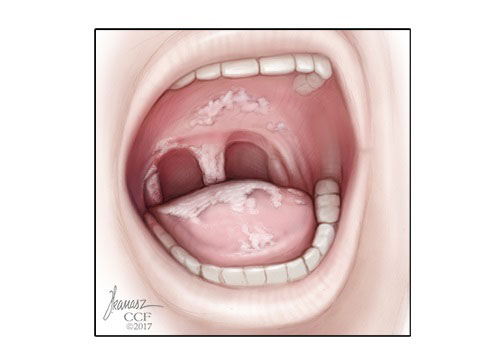Disclaimer [ENGLISH]
What is thrush?
- A common yeast infection that happens in the mouths of babies.
- The yeast is also called Candida
What are the symptoms of thrush?
- White patches in the mouth
- Can be inside the cheeks, inside the lips, and on the tongue.
- The patches stick to the mouth. They do not wash away or wipe off easily.
- Can sometimes be uncomfortable leading to decreased sucking/ feeding.
- Most of the time, the discomfort is minimal or mild.
How is thrush diagnosed?
Your child’s primary care provider will examine their mouth for any white patches.
How is thrush treated?
- With a prescription anti-yeast medication.
- Most commonly used medication is called Nystatin.
- You will apply the medication to the white areas in your child’s mouth 4 times per day.
- You will usually need to do the treatmetn for at least 7 days and continue the treatment for at least 3 days after the patches have gone away. Symptoms usually start to improve after 4 or 5 days of treatment.
- Follow the treatment instructions from your child’s primary care provider.
- Sanitize any nipples or pacifiers used by your baby.
- If a breastfeeding mother has signs of a yeast infection on her breast, it should be treated to prevent repeat infections.
- Common signs include red, painful, sore nipples.
- Breastfeeding mothers should wash any creams off prior to breastfeeding.
When to call your healthcare team:
- Your child is feeding/drinking less than normal.
- Your child is showing signs of dehydration.
- Your child’s symptoms are not starting to improve after 7 days of treatment.
- Your child develops a severe diaper rash.
- Your child is getting worse
- You have other questions or concerns.
This publication was adapted from information from American Academy of Pediatrics Patient Education materials.
Reviewed by: FC D.O., CPCMG Newborn committee, AR D.O. | 05/2024



